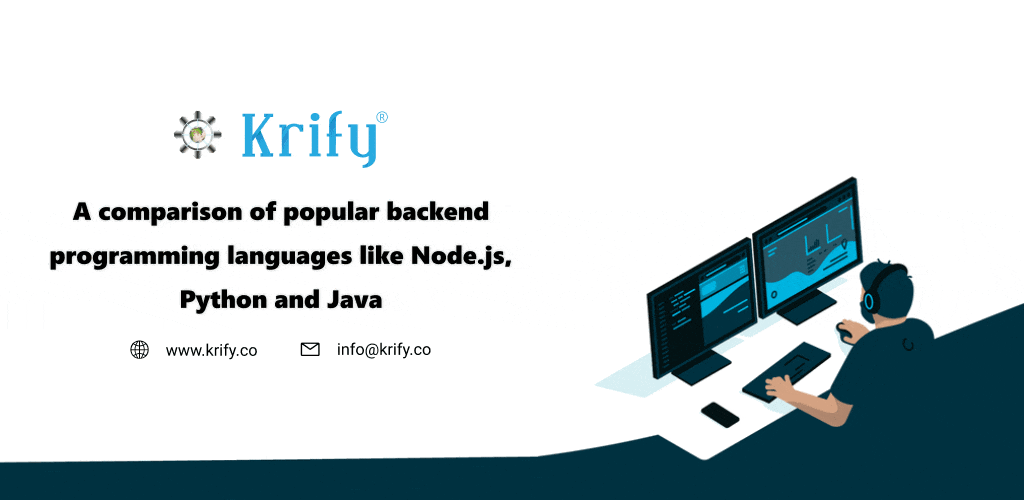Choosing the correct backend programming language is a vital choice in web development that may make or ruin a project. The backend language is in charge of handling requests and answers, as well as interfacing with databases and other backend systems. Backend programming languages with widespread use include Node.js, Python, and Java. We’ll compare and contrast these three languages in this blog to help you determine which one is ideal for your project.
Node.js:
- Node.js is a server-side JavaScript runtime environment that is open source and cross-platform. It is based on the Google V8 JavaScript engine and is optimized for asynchronous I/O operations. Node.js is frequently used to create scalable, high-performance online applications, real-time web apps, and network applications.
- One of the most significant benefits of utilizing Node.js is its speed and performance. It can handle a huge number of requests at the same time because it is built on the V8 JavaScript engine. Furthermore, Node.js has a big and active developer community that contributes to its development and provides assistance.
One disadvantage of Node.js is its asynchronous programming paradigm. While it may effectively handle asynchronous I/O tasks, it can also make code more complicated and difficult to comprehend. Moreover, because it only operates on a single thread, Node.js is unsuitable for CPU-intensive operations.
Python:
- Python is a well-known, high-level, general-purpose programming language that is used for a variety of tasks such as web development, scientific computing, data analysis, and artificial intelligence. Python is well-known for its simplicity, readability, and use.
- Python’s adaptability is one of its key features. It has a wide range of uses, ranging from basic scripts to sophisticated web applications. Furthermore, Python has a big and active developer community that contributes to its development and provides assistance.
- Python’s readability is another advantage. Python code is simple to read and comprehend, allowing developers to collaborate on projects and maintain code over time.
Python’s speed is one of its drawbacks. Because Python is an interpreted language, it is slower than compiled languages like Java. Moreover, because Python does not support multithreading, it is not as suitable for CPU-intensive tasks as Java.
Java:
- Java is a well-known object-oriented, class-based programming language that is used for a variety of applications such as web development, mobile development, and business software. Java is well-known for its portability, speed, and scalability.
- One of the primary benefits of utilizing Java is its performance. Because Java is a compiled language, it is quicker than interpreted languages such as Python. Java is also geared for multithreading, making it suited for CPU-intensive workloads.
- Java’s portability is another benefit. Java code can operate on any platform that supports the Java Virtual Machine (JVM), making it simple to create and deploy applications in a variety of settings.
One disadvantage of Java is its complexity. Java code can be more complicated and difficult to read than Python code. Also, the learning curve for Java is greater than for certain other programming languages.
Conclusion:
Node.js, Python, and Java are all popular backend programming languages, each with its own set of benefits and drawbacks. Node.js is well-known for its speed and efficiency, yet it may be difficult to develop. Python is diverse and simple to learn, although it is slower than Java. Although Java is quick, scalable, and portable, it is more difficult to create and has a higher learning curve. Finally, the backend language you choose will be determined by the unique needs of your project and the competence of your development team.
At Krify, we have a team of specialists that are well trained in the newest technologies and would be happy to take on the complexities and reach the goals on the stipulated timeline. If you want to learn more about Node JS, Python, and Java, our team of pros would be pleased to help. Please contact us for additional details.



